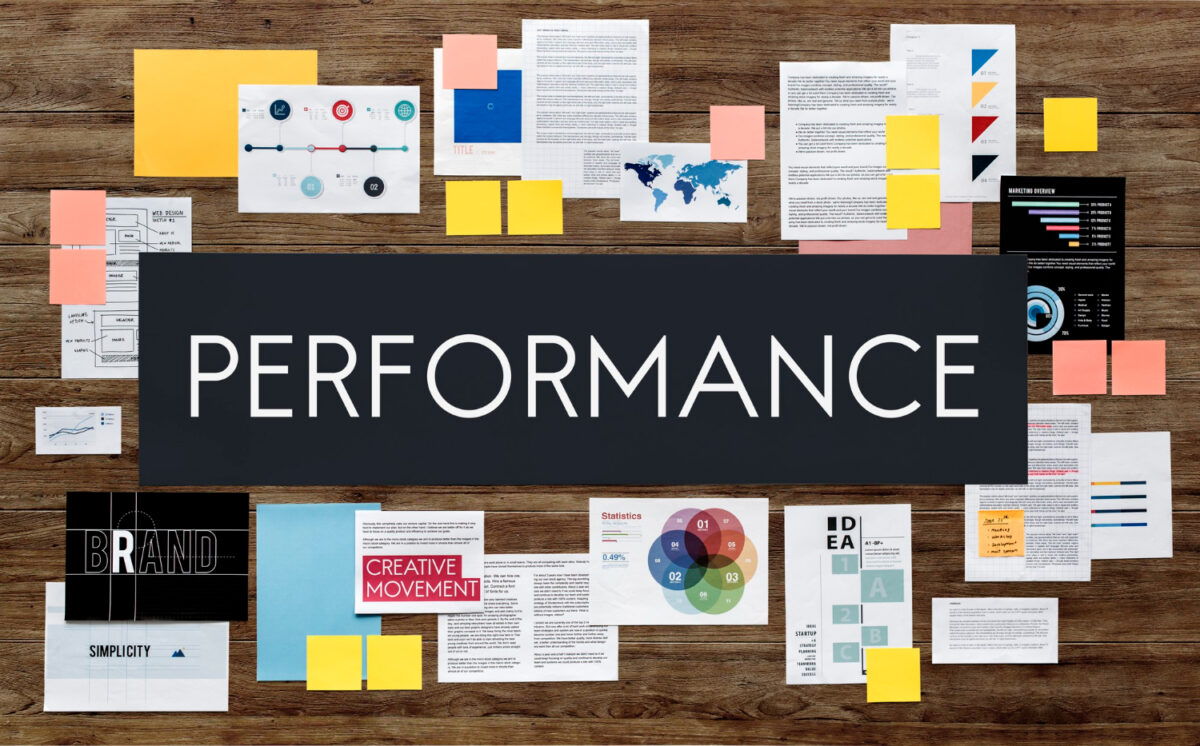Performance management is hailed by many business leaders as a way to inspire learning and development within a company, and to create a culture of target-hitting and self-improvement. Adopting performance management goals within your organization could be a very empowering change, leading to better results from staff and, as a result, better experiences for customers.
In this article, we’re covering the basics of performance management so you understand where and how to start. We’ll cover:
- The definition of performance management.
- The processes behind performance management.
- Key objectives of performance management.
1. What is performance management?
Performance management is the process of connecting team leaders and employees in a manner that inspires better communication, the achieving of key strategic goals and a continuing commitment to professional development. The practice also encourages greater team cohesion and a culture of recognition and reward.
The term ‘performance management’ is quite wide-reaching, and covers a variety of individual steps. While we’ll cover these in more detail shortly, they include activities such as aligning team members to an individual vision, setting clear goals, holding performance reviews, and more.
2. What is the performance management process?
Performance management is a continuous loop of improvement – not a set-and-forget strategy.
This is not a process you simply set up and then walk away from. The performance management process is designed to integrate with your company’s culture and remain in place forever. It creates a loop of setting targets, improving yourself and your team to meet those targets, then reviewing the outcomes to create actionable next steps, so that new targets can be established.
Let’s examine some of the specific steps in this loop so you get a feel for what to expect:
Setting objectives
Teams of people can’t achieve a vision unless they’re all working towards the same goal. Therefore, all performance management processes begin with aligning staff to the company’s wider vision and then finding specific objectives for teams and individuals to help them reach this vision. This can be done through techniques such as SMART (specific, measurable, attainable, relevant, time-bound) KPIs. At this stage, business leaders will also be identifying the metrics with which progress will be measured.
Coaching and development
Once goals are set, next come the improvements necessary to reach them. This happens in two parts:
First, a culture of learning is created. This must not only include the necessary training infrastructure and tools to teach staff new skills, but also better communication channels, opportunities for challenges and other staff empowerment measures.
Second comes the actual development. Here coaches work with their teams to monitor progress, provide feedback and maintain engagement.
Assessment
KPIs are, of course, designed to be achieved. Therefore, as we look to close the loop in the performance management cycle, team leaders will be reflecting on the progress of their staff, measuring the results, and producing next steps.
58 percent of employees say recognition is how leaders can improve staff engagement.
Rewards and recognition
As an addition to the assessment phase, rewards and recognition are vital tools to keep staff engagement levels high. In fact, when asked how business leaders could improve staff engagement, 58 percent of respondents to a Psychometrics study said “give recognition and praise”.
3. Examples of good performance management objectives
Right, so we know that performance management is an ongoing loop of communication and development, and we know that our performance management goals will be achieved through target setting, progress assessment and rewards/recognition. So the next thing we need to cover is fleshing out that first step – setting targets. What specific objectives can you as a team or business leader set for your company?
- Create superior work performance and increase motivation: Performance and engagement are intrinsically linked, so these two fit within the same objective. If your staff are underperforming as a unit, or you feel that improvements could be made in either performance or engagement, this is a logical first objective for you.
- Upskill employees and foster personal development: According to research from Tilburg University, employees consider personal development the most important part of human resource development, of which performance management is a component. In other words, staff crave self-improvement and relish it when provided. Businesses that want to invest in their individual staff members should consider this as a key performance management objective.
- Establish better communication between teams: Communication can make change an exciting new prospect, or sink the ship before it sails. Performance management relies on good communication and as such can be used to promote good two-way channels between leaders and employees. This fits in with all other areas of the cycle, including personal development. It can also be used to improve accountability in your organisation, as staff will feel more comfortable about being open and honest.
- Create a better work culture: Finally, rewards and recognition are excellent tools for encouraging a positive work culture, where people openly compliment and congratulate each other on their work (whether that’s managers to staff, or staff to each other). Recognition can be used to tell employees what’s valued in your organisation – if that’s hard work, respectfulness, inclusiveness and so on, you’re building the foundations for a workplace people can truly love.
Choose Call Design today
Ready to take the next step on your performance management journey? Call Design’s team of consultants are experts in performance management and can walk you through all the necessary steps to crafting this culture in your organisation.
To find out more about our performance management tools and training courses, contact us today.



